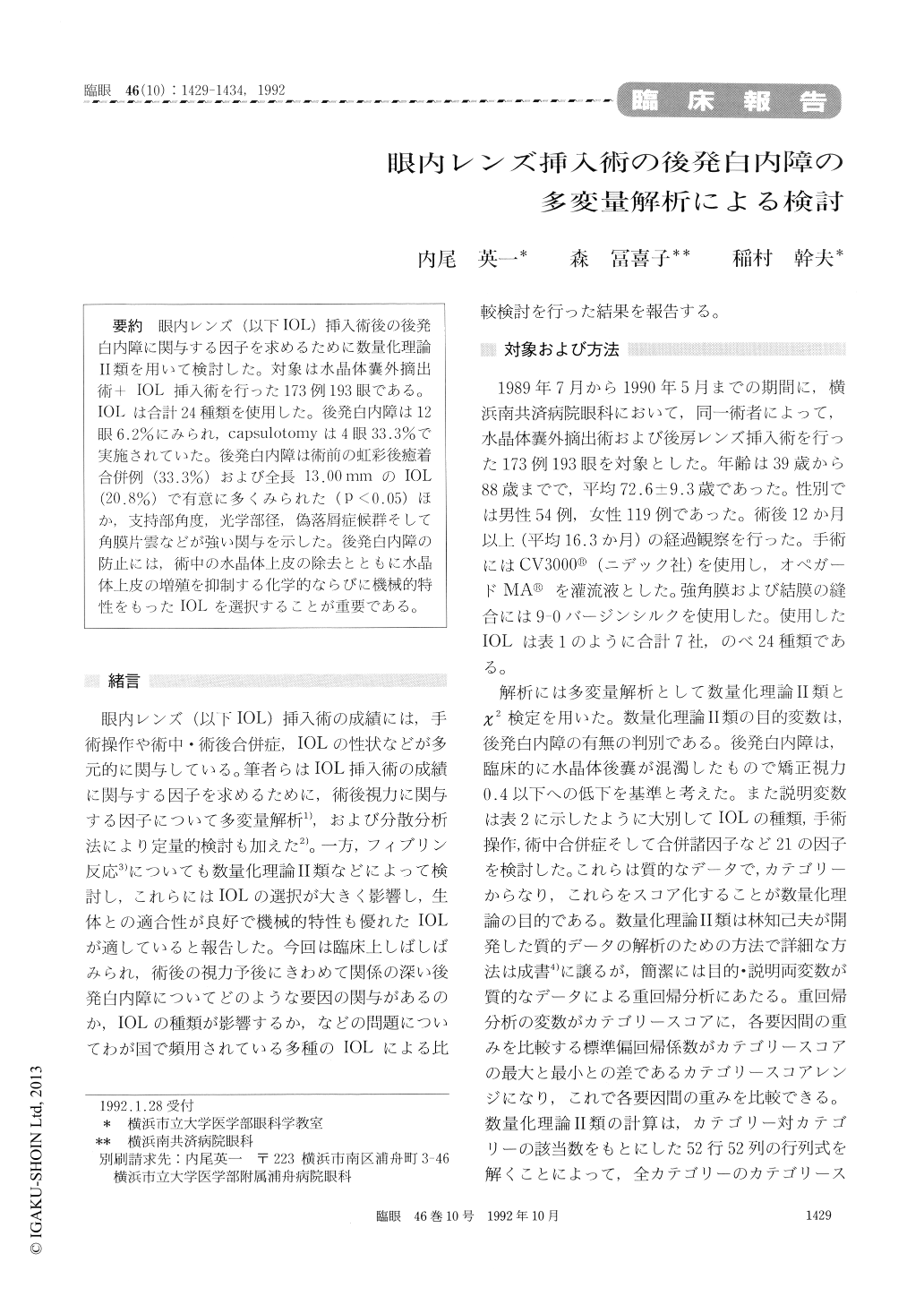Japanese
English
- 有料閲覧
- Abstract 文献概要
- 1ページ目 Look Inside
眼内レンズ(以下IOL)挿入術後の後発白内障に関与する因子を求めるために数量化理論Ⅱ類を用いて検討した。対象は水晶体嚢外摘出術+IOL挿入術を行った173例193眼である。IOLは合計24種類を使用した。後発白内障は12眼6.2%にみられ,capsulotomyは4眼33.3%で実施されていた。後発白内障は術前の虹彩後癒着合併例(33.3%)および全長13.00mmのIOL(20.8%)で有意に多くみられた(P<0.05)ほか,支持部角度,光学部径,偽落屑症候群そして角膜片雲などが強い関与を示した。後発白内障の防止には,術中の水晶体上皮の除去とともに水晶体上皮の増殖を抑制する化学的ならびに機械的特性をもったIOLを選択することが重要である。
We evaluated the opacification of posterior cap-sule after intraocular lens (IOL) implantation using quantitation study type Ⅱ. Objects of the study were 193 eyes treated by extracapsular cataract extraction with IOL implantation. A total of 24 types and sizes of IOLs were used.
Posterior capsular opacification developed in 12 eyes, 6.2%, of which 4 eyes had to be treated by capsulotomy. Incidence of posterior capsularopacification was greater in eyes with posterior synechia (33%) or with IOL 13 mm in diameter (21%) (p<0.05). Posterior capsular opacification was also positively correlated with the angle of haptics, diameter of optics, presence of pseudoex-foliation syndrome or corneal nubecula. In order to prevent posterior capsular opacification, it is essen-tial to use IOLs that would suppress proliferation of the lens epithelium either chemically or physically. Removal of the lens epithelium during surgery is also another contributing factor.

Copyright © 1992, Igaku-Shoin Ltd. All rights reserved.


